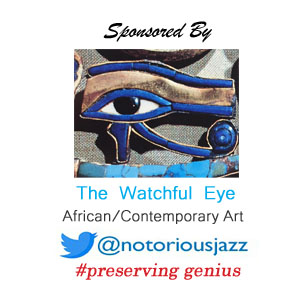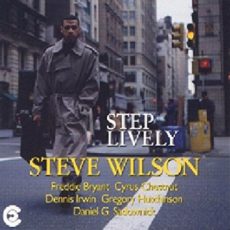
Daily Dose Of Jazz…
Steve Wilson was born February 9, 1961 in Hampton, Virginia. As a teenager, Wilson played in various R&B and funk bands and after a year of playing with Stephanie Mills he attended Virginia Commonwealth University. By 1987 he moved to New York, where he established himself as a sideman performing with American Jazz Orchestra, the Mingus Big Band and the Smithsonian Jazz Orchestra among others.
Wilson toured Europe in 1988 with Lionel Hampton and was a member of “Out Of The Blue”, an ensemble featuring young Blue Note musicians. An accomplished flautist and alto and soprano saxophonist, he also plays the clarinet and piccolo and has played and recorded with the Dave Holland Quintet, the Chick Corea Origin Sextet, with Japanese composer Yoko Kanno, has been a member of the Seatbelt’s New York Musicians, the Blue Note 7 and has performed as a soloist for Queen Elizabeth II and Prince Philip.
In 1997 he formed the Steve Wilson Quartet and has performed together for over a decade and produced two CDs. He also heads a larger ensemble, Generations, which performs jazz classic and original compositions.
He has held teaching positions in several schools and Universities, as well as holding jazz clinics, notably at the Manhattan School of Music, SUNY at Purchase, Columbia University, has been artist-in-residence at Hamilton College, Old Dominion and University of North Carolina and continues to maintain a busy career as a session musician both in studio and on tour.

Daily Dose Of Jazz…
Alonzo “Lonnie” Johnson was born on February 8, 1899 in New Orleans, Louisiana into a musical family. He studied violin, piano and guitar as a child, and learned to play various other instruments including the mandolin, but concentrated on the guitar throughout his professional career. By his late teens, he played guitar and violin in his father’s family band and with trumpeter Punch Miller in the Storyville clubs.
In 1917, Johnson joined a revue that toured England, returning home two years later to find that all of his family, except his brother James, had died in the 1918 influenza epidemic. Settling in St. Lois with his brother James the two embarked on a duo performance, though Lonnie also worked the riverboats in the orchestras of Charlie Creath and Fate Marable.
Johnson would go on to enter a blues contest in 1925 winning a recording contract with Okeh Records, record in New York with Victoria Spivey and tour with Bessie Smith’s T.O.B.A. show. By 1927, he recorded in Chicago as a guest artist with Louis Armstrong and His Hot Five, and in 1928 he was in the studio recording with Duke Ellington and with the group The Chocolate Dandies playing 12 string guitar solos on many these early recordings.
With the temporary demise of the recording industry in the Great Depression, Johnson went to work in the steel mills. However, post WWII he revived his career and would record for Decca, top the Billboard “Race Records” charts, tour England, move to Philadelphia, and record for Prestige Records. He settled in Toronto, Canada until he was sidelined when hit by a car, injuries from which he never fully recovered.
Lonnie is credited with pioneering the role of jazz guitar and is recognized as the first to play single-string guitar solos and who influenced such guitarists as Charlie Christian and Django Reinhardt. Guitarist, songwriter, jazz and blues singer Lonnie Johnson passed away on June 16, 1970.
More Posts: guitar
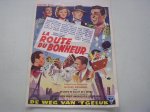
Jazz In Film
La Route du Bonheur (The Road To Happiness) is a 1952 film directed by Carlo Mastelli, the young radio presenter of “New Voices” has run short of ideas and his program is likely to be suspended from the radio schedule if he does not find any new ones. He is saved by chance in the person of Marina, a charming young school teacher, who takes advantage of the presence of a radio crew in her village for the recording of a singing contest to broadcast an appeal in favor of Tonino, the most underprivileged of her pupils.
Directors: Carlo Mastelli,Maurice Labro and Giorgio Simonelli
Stars: Georges Guetary, Luis Mariano and Nilla Pizzi
Musical appearances by Louis Armstrong and His Orchestra, Sidney Bechet, Claude Luter, Django Reinhardt and Hubert Rostaing.
More Posts: film
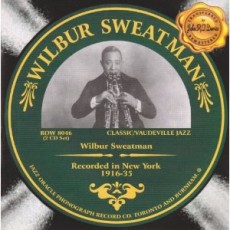
Daily Dose Of Jazz…
Wilbur C. Sweatman was born in Brunswick, Missouri on February 7, 1882 and started playing violin but took up clarinet. He toured with circus bands in the late 1890s, briefly played with the bands of W.C. Handy and Mahara’s Minstrels before organizing his own dance band in Minneapolis, Minnesota by late 1902.
It was there that Sweatman made his first recordings on phonograph cylinders in 1903 for a local music store. These included what is reputed to have been the first recorded version of Scott Joplin’s “Maple Leaf Rag”; however, no copies of these are known to exist today. By 1908, Sweatman was in Chicago as bandleader at the Grand Theater where he attracted notice and in a 1910 article was referred to his nickname, “Sensational Swet.”
By 1911, he had moved to the vaudeville circuit full-time, developing a successful act of playing three clarinets at once, went on to write a number of rags including his most famous “Down Home Rag”. He would move back to New York, tour major vaudeville circuits, befriend Scott Joplin and become his executor, record for Emerson Records, and the first Black to make recordings as Jazz or “Jass” as it was known then and one of the first to join ASCAP, and several notable musicians passed through his band, including Duke Ellington, Coleman Hawkins and Cozy Cole.
Wilbur Sweatman, ragtime and Dixieland jazz composer, bandleader and clarinetist who continue to record for Gennett, Edison, Grey Gull and Victor record labels, passed away in New York City on March 9, 1961.
More Posts: clarinet
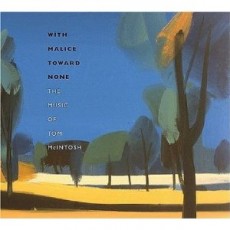
Daily Dose Of Jazz…
Thomas S. McIntosh was born February 6, 1927 in Baltimore, Maryland and studied at the Peabody Conservatory. During his time in the Army band he played trombone, followed by a move to New York in 1956 where he played with Lee Morgan, Roland Kirk, James Moody, Art Farmer and Benny Golson. During this period he also graduated from Julliard.
By 1961 he was composing “The Day After” for trumpeter Howard McGhee and two years later for Dizzy Gillespie’s “Something Old, Something New” album. The following year his composition “Whose Child Are You?” was performed by the New York Jazz Sextet, of which he was a member.
Working with Thad Jones and Mel Lewis in the late Sixties, as a leader McIntosh recorded Manhattan Serenade and worked with earl Coleman, Jerome Richardson, Billy Taylor, Frank Foster, Eddie Williams, Gene Bertoncini, Bobby Thomas and Reggie Workman. He arrange for Bobby Timmons and Milt Jackson, working as a sideman with the later and also Oliver Nelson and Shirley Scott.
Tom gave up jazz and moved to Los Angeles and began a long and successful career composing for film and television writing music for such films as The Learning Tree, Soul Soldier, Shaft’s Big Score, Slither, A Hero Ain’t Nothin’ But A Sandwich and John Handy. In 2008 he was honored by the National Endowment for the Arts as a Jazz Master. Trombonist and composer Tom McIntosh passed away in his sleep at age 84 on July 26, 2017.
More Posts: trombone


